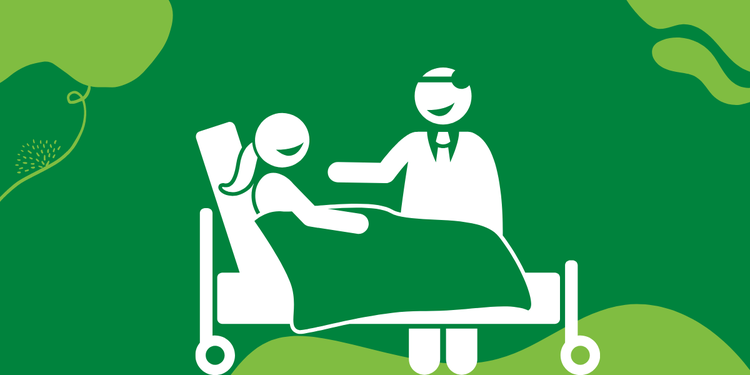RECOGNIZING SYMPTOMS OF ILLNESS IN CHILDREN
During an emergency, you should be even more attentive to changes in your infant or child's behavior, mood or well-being.
If you encounter unfamiliar symptoms or are unsure of the diagnosis, do not delay seeking medical care.
Below are the signs that indicate negative changes in the infant or child's health.
Symptoms Requiring a Doctor’s Care
Many symptoms of illness are considered normal and will resolve, but others require medical attention. Seek care from a doctor if your child experiences the following symptoms:
- Diarrhea: Diarrhea symptoms
- Bleeding: It is necessary to consult a doctor urgently once you notice blood in the feces, urine, or food that the child has regurgitated or vomited. Do not ignore bloody discharge from the nose, ears or genitals. If you notice bruises on the child's body, even though he was not hit the day before, take urgent action seeking medical care.
- Vomiting: Repeated vomiting that isn’t regurgitation, which is normal.
- Ear Pain: Ear Pain that lasts one or two hours, is accompanied by discharge from the ear, fever, weakness, or vomiting, or is occurring in a child less than 3 months old.
- Poisons: The child swallowed a poisonous substance or household chemical, a battery, more than one magnet, a sharp object.
- Dehydration: Dehydration that manifests itself as the absence of urination for more than six hours; dryness of the skin and mucous membranes, tongue; crying without tears; or sunken eyes.
- Change in Voice: A hoarse voice can be a sign of viral croup or spasm of the larynx (laryngospasm).
- Breathing Problems: Difficulty breathing, including noisy, hoarse, fast or shallow breathing. Also, the child can take long pauses between breaths. For example, when the skin between the ribs or in the jugular fossa (the pit at the bottom of the neck, between the collarbones) is drawn in with inhalation.
- Drowsiness: Drowsiness is not about the baby sleeping longer, such as when recovering from an illness. Drowsiness is when a child naps all day, is difficult to wake up, or falls back asleep shortly after you wake them up.
- Appetite Loss: Extended loss of appetite where the baby has reduced daily food intake by at least half.
Symptoms Requiring Emergency Care in Children
Seek emergency medical care for any of the following symptoms in children:
- Vomiting: Repeated vomiting. Vomiting masses have a greenish color or contain impurities of mucus and blood.
- Stool Issues: Stool with mucus, green or bloody impurities.
- Drinking Issues: A child being excessively thirsty or unable to drink or breastfeed.
- Injury: Serious injury: cut, burn, fall from a great height, etc.
- Сonvulsions: Сonvulsions, even if it seems to you that the child is recovering quickly (do not try to give the child food, drink, or medicine!)
- Behavior Change: A sudden change in behavior: refusal to eat, unreasonable irritability, sudden lethargy, increased drowsiness, convulsions, confusion of consciousness (it seems to you that the child does not understand what is happening around or does not recognize you).
- Anaphylactic Reaction: An anaphylactic reaction caused by anything, including insect bite.
- Fainting: The child fainted or does not wake up.
- Breathing Issues: Difficulty breathing. Cessation of breathing for more than 15 seconds.
- Inhalation Issues: Inhalation of a foreign body or asphyxia (suffocation) of all other types (choking on vomit, drowning, suffocation).
- Abdominal Pain: Severe abdominal pain accompanied by vomiting.
- Rash: Rash accompanied by other symptoms (fever, vomiting, cough, lethargy).
Symptoms Requiring Emergency Care in Infants
Seek emergency medical care for any of the following symptoms in infants:
- Not able to feed at all or not feeding well
- Convulsions
- Severe chest indrawing
- Reduced activity (Movement only when stimulated or no movement at all)
- Becomes sicker
- Develops a fever
- Feels unusually cold
- Develops fast breathing
- Develops difficult breathing
- Palms or soles appear yellow
- Umbilicus red or draining pus
- Skin pustules
- Sunken eyes

For emergency support services in your country of residence, visi the Blue Dot Hub.




